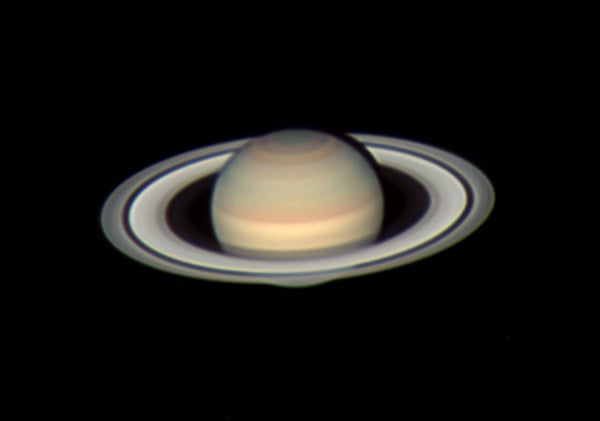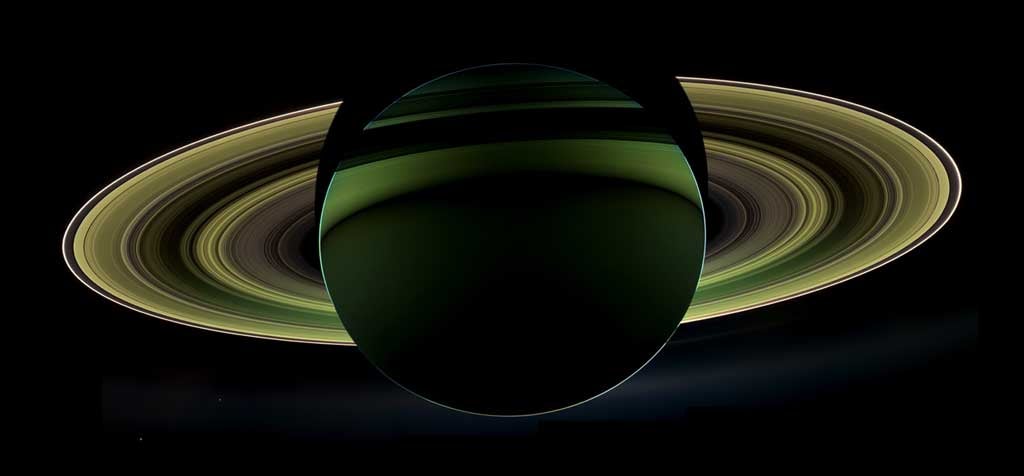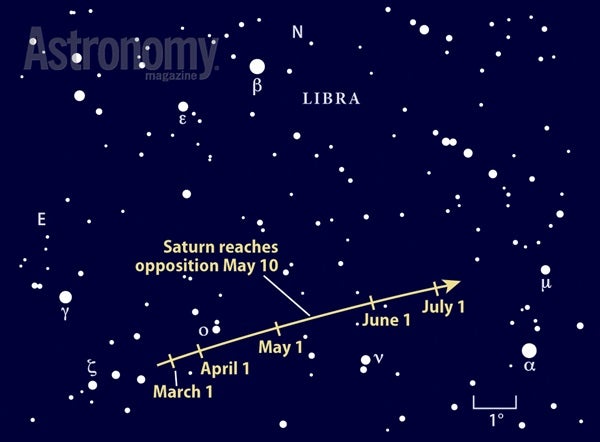As you might guess, opposition means the planet rises at sunset, climbs highest in the south around 1 A.M. local daylight time, and sets as the Sun comes up. Opposition also brings Saturn closest to Earth, so it shines brightest for the year (at magnitude 0.1). During times of good seeing (atmospheric steadiness), an observer can pick out the more prominent features of the globe and rings through a 3-inch telescope.
Opposition marks the peak time for observing any outer planet. Not only does a distant world then remain visible all night and shine brightest, but it also appears largest through a telescope. On May 10, Saturn’s disk measures 19″ across while its stunning ring system spans 42″. [NOTE: the ” symbol is the way astronomers abbreviate arcseconds, a way to measure the apparent sizes of celestial bodies. One arcsecond equals 1/3,600 of 1°.] The rings tilt 22° to our line of sight and reveal exquisite detail through any scope. Although the planet shrinks as we get further from opposition, the change is barely detectable — the ring system’s diameter drops only 0.3″ by month’s end.
Saturn also has several moons that show up through small instruments. Any telescope reveals 8th-magnitude Titan, while a 4-inch scope brings Tethys, Dione, and Rhea — all 10th-magnitude satellites — into view.
FUN FACTS ABOUT SATURN
- Saturn is 95 times as massive as Earth.
- From Saturn, the Sun appears 1 percent as bright as from Earth.
- Saturn’s polar diameter is only 89 percent of its equatorial girth.
- The rings tilt 27.3° with respect to Saturn’s orbit.
- More than 800 Earths would fit inside the ringed planet.
- It is the only planet whose density is less than water. If you could find an ocean big enough, Saturn would float.
- Video: Tour the Solar System: Saturn, with Bill Andrews, former associate editor
- Video: Easy-to-find Objects in the 2014 Spring Sky, with Richard Talcott, senior editor
- StarDome: Locate the Saturn in your night sky with our interactive star chart.
- The Sky this Week: Get your Saturn info from a daily digest of celestial events coming soon to a sky near you.
- Sign up for our free weekly email newsletter.













